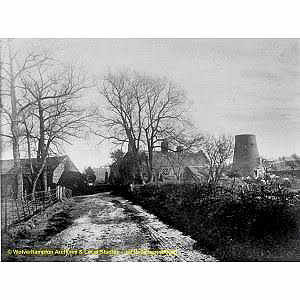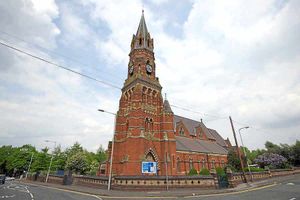Wolves' 140th anniversary: From humble beginnings
It was played on a bumpy field, with hardly anyone watching and Wolves possibly wore blue and white stripes, the colours of their now-fierce rivals.
Not exactly the gold and black Wolverhampton Wanderers that will line up against in front of 27,000 people at Molineux today, writes Wolves correspondent Tim Spiers.
But these were the humble origins in which the club played its first ever football match, almost exactly 140 years ago today.
St Luke's, as Wolves were known at the time due to many of the players being members of the church's choir, faced the well established Stafford Road's second team on January 13, 1877.
They lost 8-0, a scoreline Wolves fans of a glass half-empty nature would no doubt scoff at as being 'typical Wolves'.
But the score was irrelevant. The foundations were being laid for the club that would become one of the biggest and most successful in English football.
Two months earlier an advertisement had asked for 'any gentlemen interested in the game' to attend a meeting of 'Goldthorn Football Club', although the name was soon changed to St Luke's.
Teenagers John Brodie and Jack Baynton had come up with the idea of forming a team and got support from old schoolmates as well as more who attended the meeting including George Blackburn, described as a "gentle centre half", although he didn't feature in that first game.

Each player paid a shilling to join the club and Jack got permission from his mother to use his mother's Lodge Farm, by Goldthorne Hill, for a pitch.
Wolves historian Pat Quirke, who has written extensively about the club's beginnings in his book The Origins of Wolverhampton Wanderers, takes up the story.
"The pitch must have been quite a scrubby sort of area and they had no changing facilities – they had to get changed in bushes which surrounded the field.
"We're not 100 per cent sure what colours they wore but it was possibly blue and white. They changed to red and white soon after.
"There's no mention in the archives of spectators. There would have been a couple of dozen at the most I would have thought.
"It was a bit of a novelty at the time so they may have had a few family members watching."
Those early games certainly weren't the organised league clashes that Wolves would soon feature in.
In fact Mr Quirke added: "Brodie said about the early days that because there were too few teams to play they'd compromise and play half a game of football and then half a game of rugby. Anything for a bit of sport!"
An account of that first ever match was published in the Evening Express.
An excerpt from that report reads: "The captain of the home team, winning the toss, elected to play with the wind at his back and the ball was kicked off by Gowland at half past three.
"From the commencement it was evident that the superior strength and tactics of the Stafford Road men must result in an easy victory for them and after half an hour and quarter's play they were left winners of the match by eight goals to nothing.

"Several times the Goldthorn Hill forwards made a raid upon their opponents' quarters, but the defenders of the latter speedily returned the ball and the home backs played loosely.
"It was not difficult for the Stafford Road forwards, with their excellent dribbling and passing of the ball, to land it frequently between their opponents' goal posts."
The Goldthorn Hill, or St Luke's team, lined up as follows: Barcroft (captain), Hampton, Hodges, Adams, Robotham, Worrall, Kendrick, Baynton, Newman, Mayatt, Jacks and Foster.
The scoreline reflected how much work the new team had to do to catch up with their local counterparts.
But they soon did.
Two years later St Luke's merged with local cricket and football club The Wanderers, to form Wolverhampton Wanderers.
Mr Quirke added: "The big thing was in 1881 they moved to the cricket ground at Fighting Cocks and soon got gates of 3,000."
The rest, as they say, is history.





